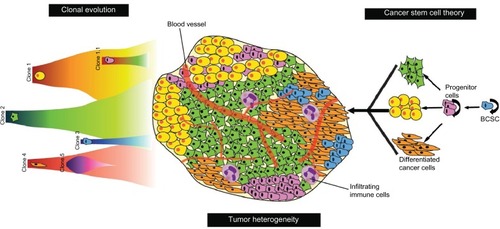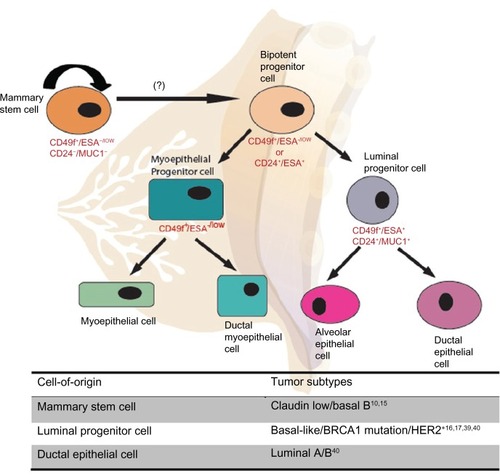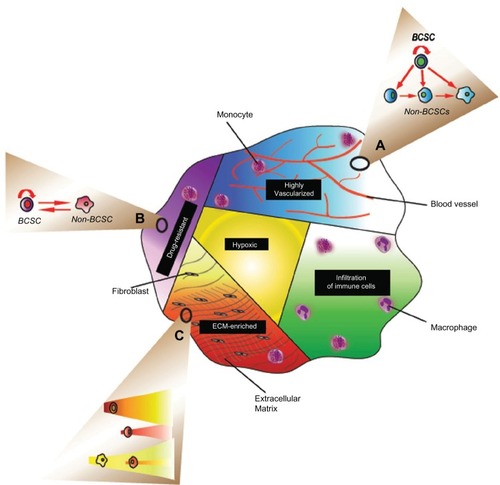Figures & data
Figure 1 Models explaining the origins of tumor heterogeneity in breast cancer.
Abbreviation: BCSC, breast cancer stem cell.

Figure 2 Proposed model of the human MaSC differentiation hierarchy with corresponding surface markers for stem/progenitor cell identification and isolation.
Abbreviation: MaSC, mammary stem cell.

Figure 3 Unified theory of tumor heterogeneity.
Abbreviations: BCSC, breast cancer stem cells; ECM, extracellular matrix.

Table 1 Biological and clinical characteristics of breast cancer molecular subtypes